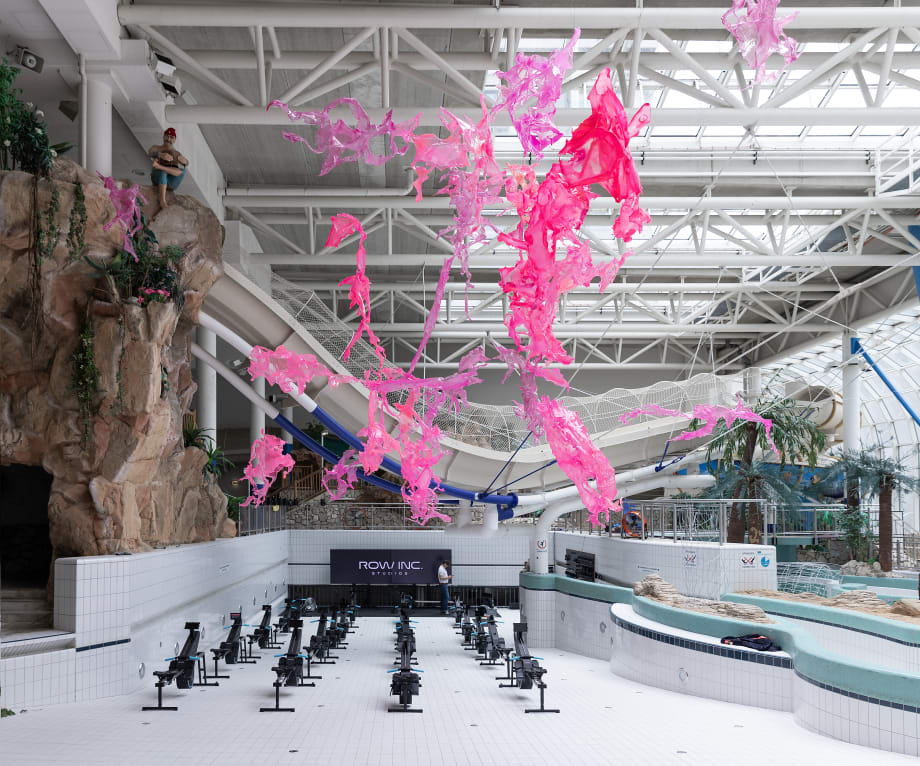In the exhibition Limits of Perception, housed in the historic setting of the former Diana Bathhouse, the works of Michael Ornauer, Clemens Wolf, and Aljoscha enter into a resonant and dynamic dialogue with the site's distinctive architecture. Through their individually nuanced artistic vocabularies, the three artists transform the space into a richly layered experiential field, inviting visitors to engage deeply with the themes of space, motion, and metamorphosis.
Michael Ornauer (b. 1979, Vienna) explores the interplay of color, materiality, and structure in his paintings with a meditative rigor. His works are guided by an intuitive sense of rhythm, a reverence for imperfection, and a sensitivity to the passage of time. Layers of pigment are applied, obscured, and then partially removed—revealing underlying strata in a process that makes visible the poetics of maturation and transformation. Rooted in the aesthetic philosophy of Japanese Wabi-Sabi, Ornauer’s practice embraces the transient, the weathered, and the incomplete as sites of quiet beauty.
Clemens Wolf (b. 1981, Vienna), who lives and works in his native city, focuses on materials imbued with traces of decay and impermanence—fences, derelict warehouses, construction zones. A graduate of the University of Art and Design Linz, Wolf’s recent works repurpose decommissioned parachutes, which he saturates with epoxy resin to create sculptural forms. What appears soft, ephemeral, and pliable is rendered rigid and immutable, challenging perception and expectation. His work explores themes of illusion, abstraction, and narrative, while also engaging with the inexorability of change and the suspension of temporality.
Aljoscha (b. 1974, Hlukhiv) reimagines the former pool hall as an otherworldly sphere of synthetic life with his monumental installation Biological Systems Always in Motion. Ethereal, translucent forms fashioned from acrylic glass drift through the space like cellular organisms or embryonic life forms, evoking a speculative vision of organic evolution. Rendered in a spectrum of delicate to vibrant pinks, the installation generates a pulsating atmosphere of emergence, mutation, and unfolding. Aljoscha’s work is grounded in the concept of Bioism, a philosophy he has long pursued, which proposes an imaginative expansion of biological principles into an ethical, utopian aesthetic. His aim is not to imitate natural processes, but to envision life forms beyond current categories—fluid, radiant, and transcendent. Here, the color pink, modulated in countless variations, becomes a symbol of tenderness, vital energy, and radical optimism. His installation offers a poetic framework for a world in flux, where life is conceived as a continuous and sensuous process of transformation—elusive, dynamic, and ever becoming.



